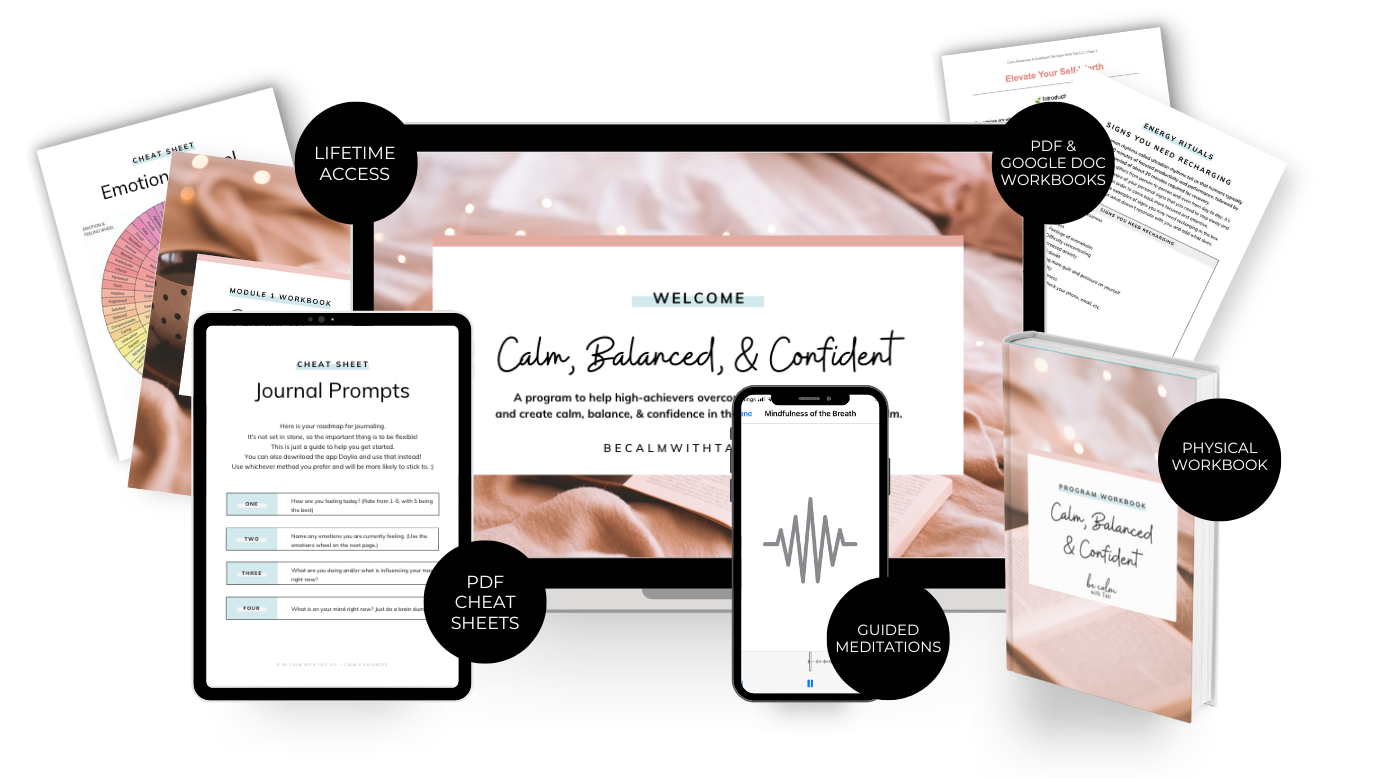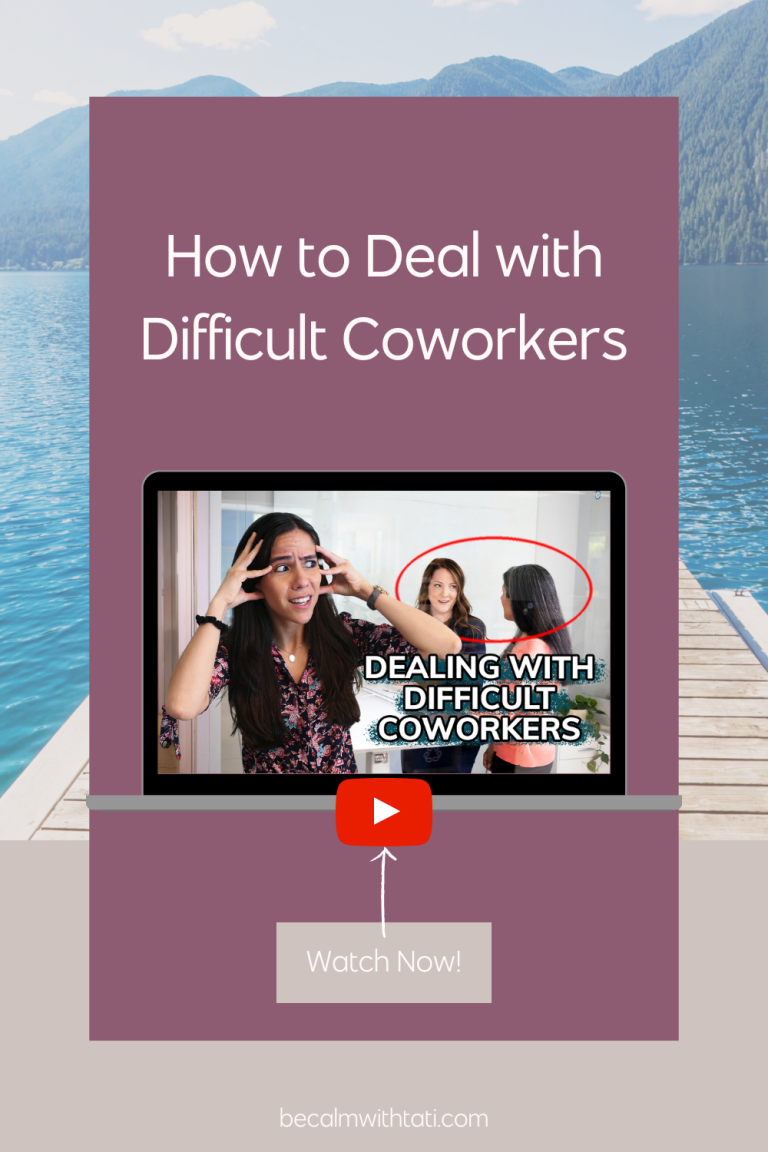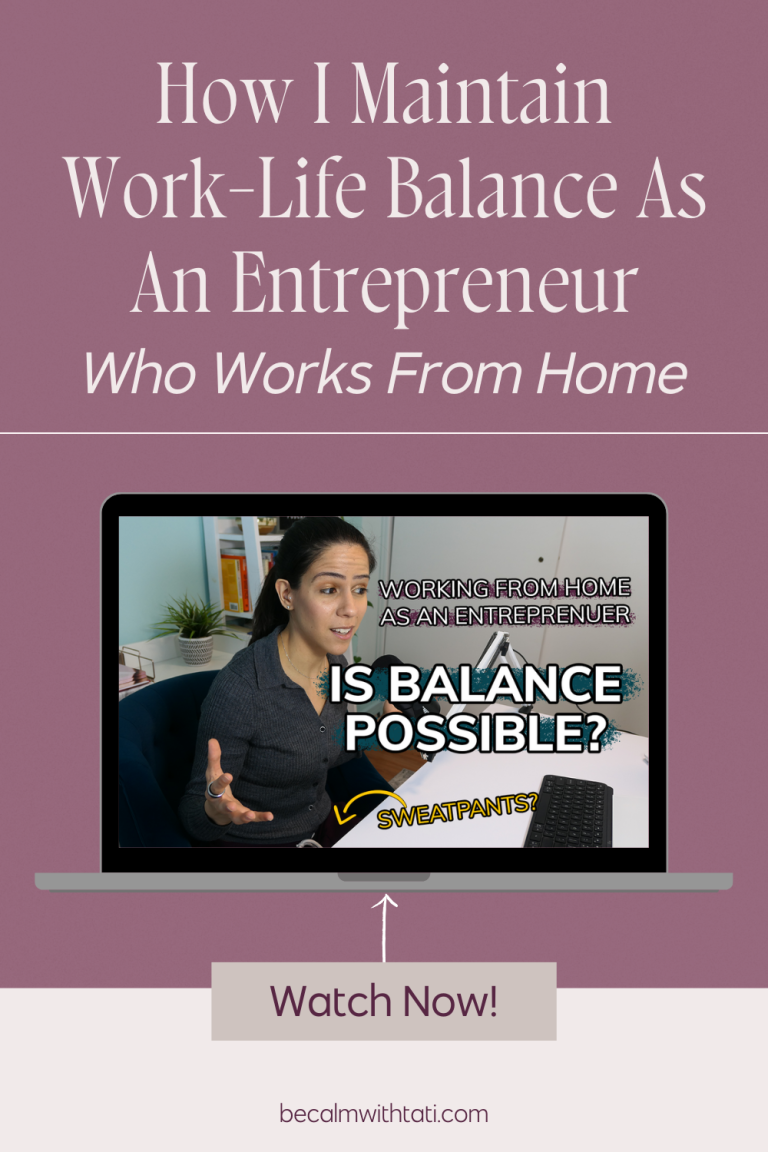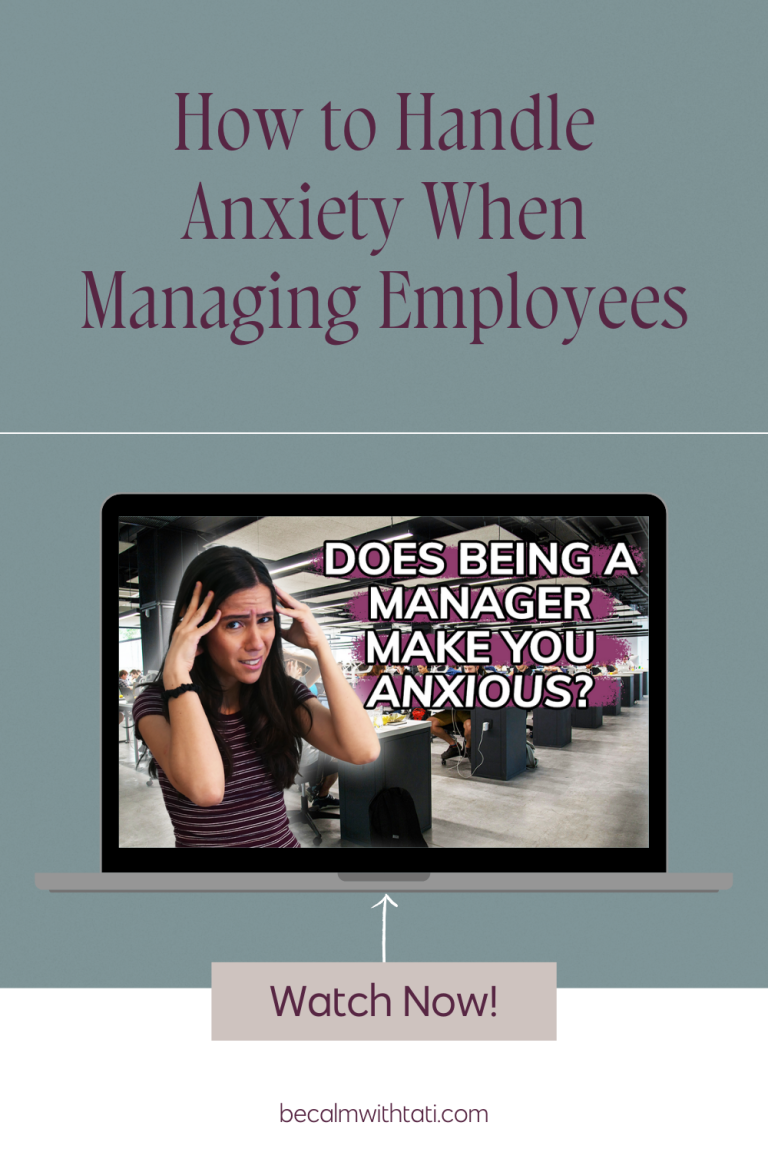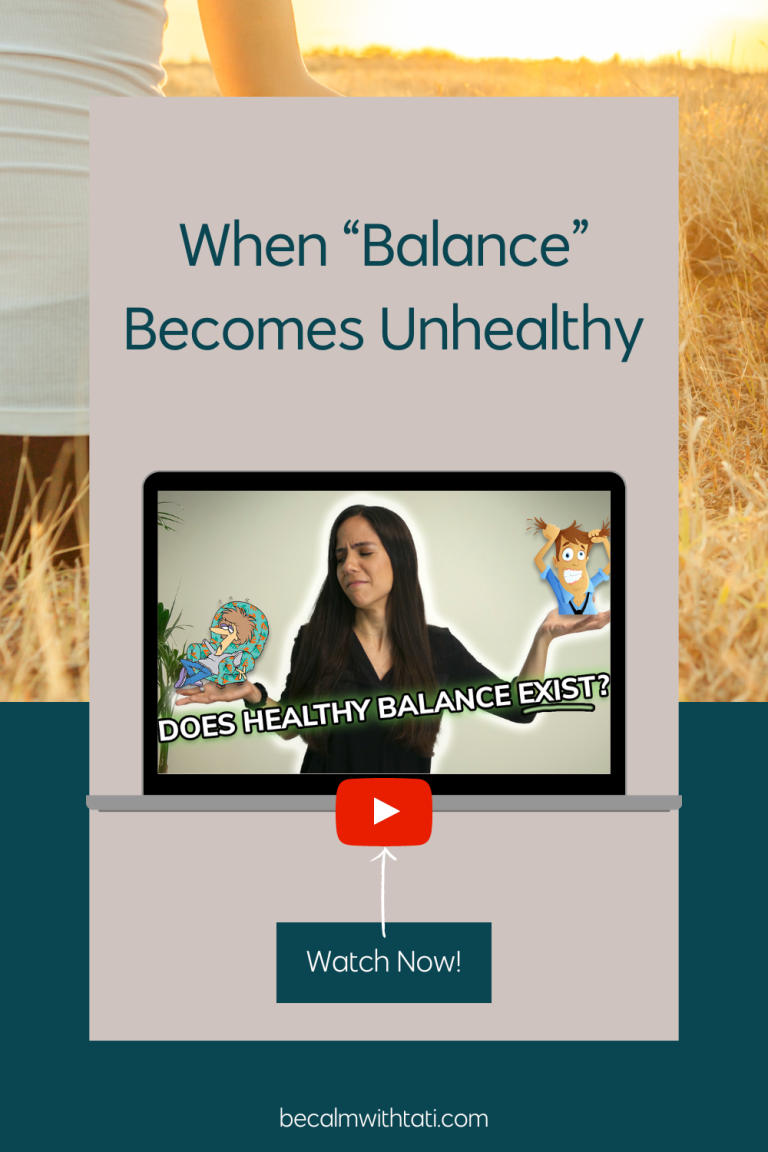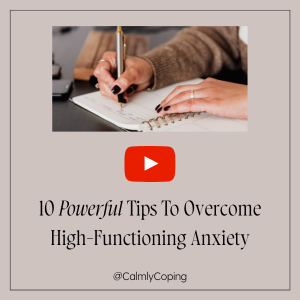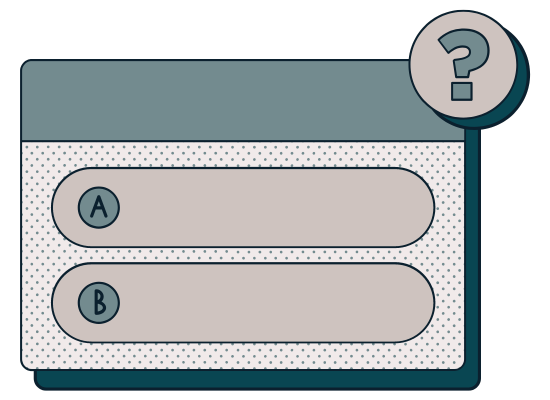Are you feeling emotionally and physically exhausted from work and/or other responsibilities? Burnout can leave you feeling hopeless, drained, and stuck, but it doesn’t have to be that way. I specialize in helping clients recover from burnout so they can stop surviving and being thriving. Today, I’ll share the strategy I use to help my clients go from overwhelmed to calm. Stay to the end to see how you can apply these steps to your own life and start your journey to recovery.
In this episode, you will learn:
- The signs of burnout
- My 3-step process for burnout recovery
- The surprising piece of burnout recovery that is more than just “rest and recharge”
LISTEN NOW:
🎧 CLICK HERE TO LISTEN TO CALMLY COPING WHEREVER YOU LISTEN TO PODCASTS
WATCH NOW:
Join the waitlist for my 1:1 services: Waitlist
Submit a message, question, or suggestion to the podcast: Message
FREE TRAINING: Achieve A Calm Mind, Balanced Life, & Empowered Confidence in 90 Days
If you want to learn how to take back control of your life so you can feel calmer and more confident, and learn the tools to spend your time according to what matters most to you (no matter what your schedule is like right now)…
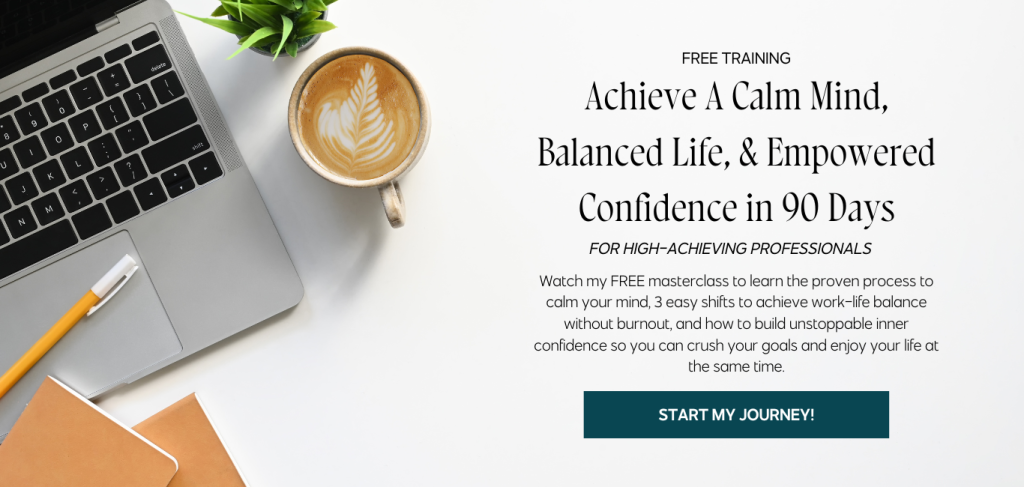
LISTEN, REVIEW, AND SUBSCRIBE TO THE PODCAST!
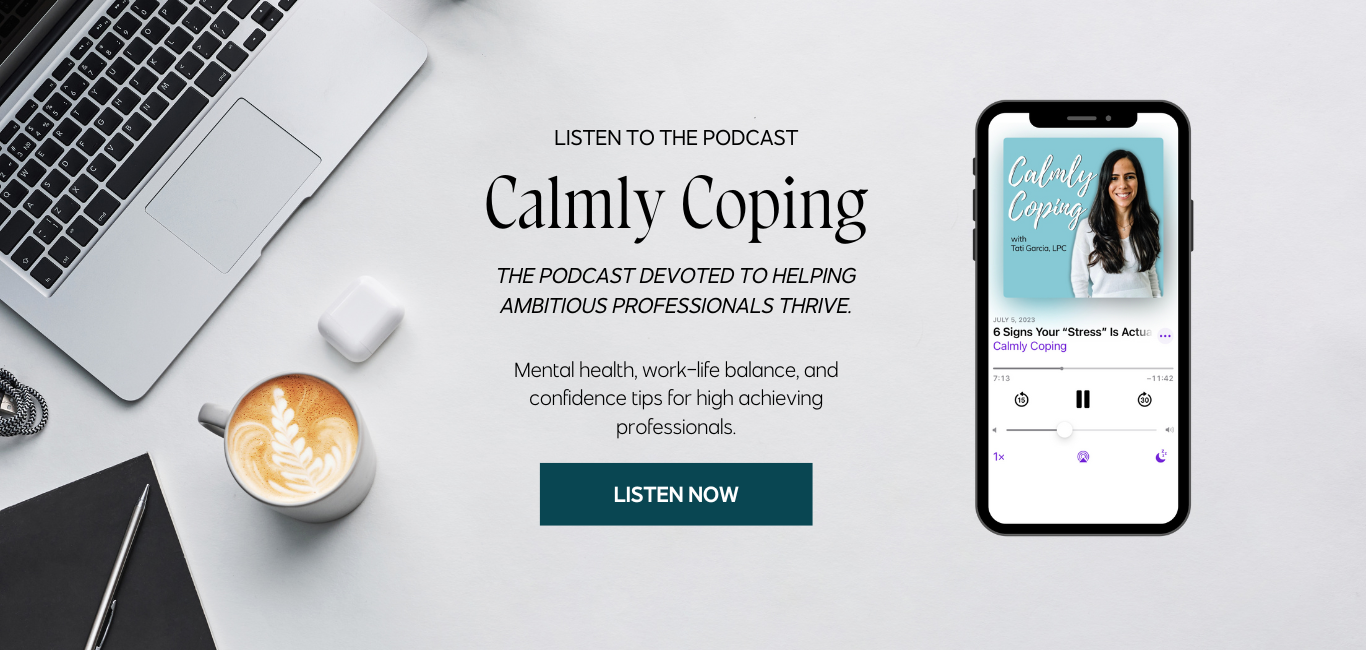
INTRO/OUTRO MUSIC: Rescue Me (Instrumental) by Aussens@iter (c) copyright 2018 Licensed under a Creative Commons Attribution (3.0) license. http://dig.ccmixter.org/files/tobias_weber/57990 Ft: Copperhead
DISCLAIMER: All content here is for informational purposes only. This content does not replace the professional judgment of your own mental health provider. Please consult a licensed mental health professional for all individual questions and issues.
Interested in diving deeper to get support for high-functioning anxiety?
I offer 1:1 coaching to help high-achievers overcoming high-functioning anxiety so they can feel calmer, more present, and have improved balance in their lives. Click here if you’re interested in learning more and getting started.
Calm, Balanced, & Confident is my comprehensive A→Z self-paced course to help high-achieving professionals overcome high-functioning anxiety so they can feel calmer, balanced, and more confident without the anxiety and overwhelm. Click here to learn more and enroll today.
Looking for ongoing support and guidance with high-functioning anxiety? The Calm & Ambitious Community is the exclusive community for high achievers with high-functioning anxiety. Click here to learn more and join us today!
TRANSCRIPT:
Click to view the episode transcript.
Are you feeling emotionally and physically exhausted from work or other responsibilities? Burnout can leave you feeling hopeless, drained, and stuck, but it doesn’t have to be that way. I specialize in helping clients recover from burnout so they can stop surviving and begin thriving. Today I’ll share the strategy that I use to help my clients go from overwhelmed to calm.
Stay to the end to see how you can apply these steps to your life and begin your journey to recovery.
Welcome to Calmly Coping. My name is Tati Garcia and I’m a licensed therapist and coach who specializes in helping high achievers overcome anxiety, overwhelm, and burnout so you can feel calm, balanced, and confident from within. If this topic interests you, then please like, subscribe, and hit the notification bell so you’ll be notified every time I release a new episode.
Thank you so much for tuning in. First, let’s talk about what the signs of burnout are. Chronic exhaustion. So maybe you feel tired no matter how much rest you get or how much you recharge. Increased cynicism and detachment. So this looks like being really negative about the things around you, about the the world about your job.
So really that cynical kind of mindset and feeling detached or disconnected. So maybe you used to be really invested and interested in your job or in your family, but you’re feeling really disconnected about them. This could also look like reduced performance and productivity that because you’re feeling these ways, you’re having trouble performing at your peak and doing productive work.
You might also experience increased. irritability, frustration, and impatience. Maybe you’re really on edge and it’s hard for you to listen to others or just interact in the way that you used to. People get on your nerves a lot, you’re feeling really frustrated about a lot of things. There could also be physical changes, maybe changes in your appetite or sleep.
or digestive issues. Maybe you’re experiencing things like headaches more often or physical pain and tension. You might also experience a loss of enjoyment and fulfillment from things that you used to enjoy from work or other activities like your personal life and relationships. Maybe you are socially withdrawing, isolating yourself, and it’s possible you could be engaging in unhealthy coping mechanisms like drinking alcohol or smoking marijuana or anything else to help you to calm down, wind down, or get your mind off of things.
If this sounds like you, then there is a way to recover from this. And I do want to emphasize that some of these symptoms align with the symptoms of anxiety and or depression. If you’re in a place where you’re really struggling with these symptoms, Then seek out the support of a mental health professional in your area.
I am personally licensed in New Jersey and Pennsylvania. So if you’re a resident of those States, then you can reach out to me in the description below. However, wherever you are located, it’s really important to get the help that you need in order to recover from these struggles, because they can be really debilitating and really have a negative impact on not just your performance at work, But on your personal relationships and just overall fulfillment in life.
So now let’s get into the recovery strategy that I use with my clients. So step number one is getting to the root. And this is something I’ve talked about over and over again, but is a really important step to help you to recognize. What has gotten you here? Why are you in this state of burnout? What are the circumstances that have led you to be in this place?
Because you can’t make an effective plan for getting out of burnout and preventing it in the future without understanding why you’re here in the first place. So this can look like identifying maybe external and internal causes of burnout because both of them can have an impact. You might think that it’s completely external.
It’s all about your job and the schedule that you have in the hours and those things. certainly can have an impact on burnout. And in addition to that, there can also be internal factors that are keeping you in a place of burnout. Maybe it is the fear of dropping the ball or anxiety about financial issues, or maybe it is worry about not being productive enough, or being perceived in a certain way.
There can be so many things that can keep you in stuck in this place of burnout. An important step of this is increasing your emotional awareness, understanding how your emotions and learning how to regulate your emotions can help you to recover from burnout. And in addition, your beliefs, the way you think about things, like I mentioned before, those internal causes.
So if you are in a place of feeling like, if I stop working, then that means that I’m a failure and I am not supposed to give up or ever stop or slow down, then those beliefs that maybe. Under the surface unconscious you’re not even aware of, can be contributing to staying in this place of burnout. These are things that you could have learned growing up through past experiences from your parents or caregivers and in many different situations.
And so understanding the root of these beliefs that are keeping you stuck in this place is a really important step to burnout recovery. Step number two is compassionate recovery. This is calming your mind, calming your body, and helping you get. out of this place of burnout. This can look like taking a break from work and it, it’s not always something that’s necessary or possible for everybody.
If work is the thing that is contributing to your burnout, then maybe this can look like reassessing and exploring. Do you want to stay in this job? Do you want to make any changes? Do you need any sort of accommodations, things like that. However, Outside of these external changes, the internal changes are learning how to regulate your emotions and work through things like stress, anxiety, and anything else that comes up.
Also learning how to be more self compassionate. That’s the reason why I’m calling this compassionate recovery, because self compassion is a huge piece of burnout recovery. Because oftentimes there can be a lot of shame and a lot of of difficulty associated with being in a place of burnout. You might think, well, I used to be able to do these things and now I can’t.
What’s wrong with me? People are going to look at me negatively. They’re going to judge me. When in reality, we all have our limits. I’ve reached a place of burnout before, and I know many high achieving individuals who have. It doesn’t mean that you’re broken, that you’re a failure, or that there’s anything wrong with you.
It just means that this is an opportunity for you to reassess and see what needs to change so So that you can stop struggling and begin thriving and work with yourself rather than pushing against yourself. A lot of times burnout comes from a place of ignoring your needs and maybe making choices that aren’t in alignment with things that you value.
And so this can be an opportunity to assess, okay, what’s not working? What needs to change? How would I want my life to look like? What are my values? This is all a process of recovery from burnout. It’s not just about calming your body and recovering from things like anxiety, although that’s a very important piece of it if that’s what you’re experiencing, but it’s also about connecting with your values, assessing your needs.
Listening to yourself and understanding my needs weren’t being met in the situation. Why is that? And how can I now meet them? That looks like things like practicing more self care, self reflection through things like meditation, journaling, and emotional awareness and spending your time doing things that are personally meaningful for you, whatever that means for you, because that’s different for each and every person.
So burnout, like I mentioned, it’s more than just learning how to improve your mental health. It’s about connecting with what is personally valuable and meaningful to you and what your personal needs are and recovering in that way. Step three is sustainable prevention. So this includes taking some pieces that I mentioned from the last step.
connecting with your values, assessing your current circumstances, what changes need to be made, and exploring and potentially making those changes. Maybe that looks like getting a job that allows more flexibility. Maybe that looks like having a conversation with your supervisor about more support that you might need.
Or maybe it looks like setting more clear boundaries in your workplace or with whatever is causing you to feel burnt out. And then the prevention piece is understanding and setting boundaries. boundaries to ensure that you are sticking to this and then taking the first step when we got to the root and exploring, okay, what got me into a place of burnout?
How can I avoid those things? How can I maintain those boundaries? And also recognizing what are your personal warning signs of burnout? This is a huge and important step so that you can catch yourself before it becomes too late before you get into another. period of burnout and then you’re having to start from scratch again.
And I want to emphasize, you’re never really starting from scratch because once you have taken these steps, then it is something that you’ve trained your mind and body to do and you will be able to do again. However, the step of recognizing and identifying your warning signs can be helpful to prevent you from getting into a place where you don’t have to go because maybe your warning signs are, I’m starting to feel more irritable, I’m feeling really overwhelmed.
Okay, these are signs that I’m starting to struggle again. Maybe I’m potentially heading towards burnout. How can I address these signs now and take a step back and reassess, make changes, do what I need to do, practice more self care, take more breaks, whatever that looks like before Getting back into a place of burnout again, and this also looks like making a long term self care plan What are your non negotiables when it comes to self care?
What are the things that you need to do on a regular basis to ensure that you are meeting your personal needs? So that you are not giving and pushing more than you are giving back to yourself. These three steps are the steps that I’ve used again and again with helping my clients recover from burnout successfully.
And if this is the place that you’re in, this is something that is entirely possible for you. If you’re doing this on your own, Then I would suggest going back through this episode, taking notes and starting one small step at a time. And if you’re looking for professional support, you can learn more about my one to one services and get on the waitlist.
So you’d be notified when I have new openings by clicking on the link in the description or going to calmlycoping.com/waitlist. When you recover from burnout, this can look like feeling more hopeful and fulfilled in your life. This can look like. The simple things like getting better sleep and feeling happier when you wake up in the morning.
This can also look like improved relationships, more time with your family, more attention towards your family and or the people in your life that matter to you. This can look like increased productivity and performance and can have so many benefits. And so just know that if you’re in this place of struggling from burnout, it’s It doesn’t have to continue to be this way.
There are things that you can do to get out and steps that you can take. And the process to burnout recovery happens one small step at a time. If you found this episode valuable, I would love to hear from you. You can submit a message to the podcast by going to calmlycoping.com/message. Asking me your questions, sharing your comments or thoughts, you can also leave a comment below if you are watching on YouTube or listening on Spotify.
And while you wait for next week’s episode, I have other episodes about calming your mind, improving work life balance, and feeling more confident from within. So be sure to check out these episodes here. Thank you so much for tuning in today and until next time, be calm.


Until next time…



